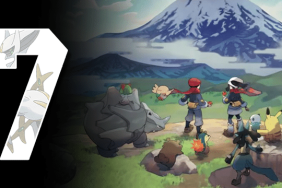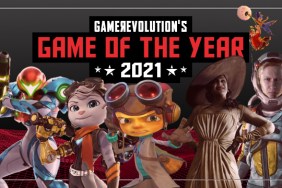The general consensus is that 2016 was a good year for gaming. It had big releases on every platform, some potential unlocked by new hardware, as well as a healthy amount of surprises. But it certainly wasn’t a great year thanks to disappointments such as No Man’s Sky and a general lack of momentum.
The good news is that 2017 is going to turn things around in a big way. As a gamer, you should be thrilled about 2017, and this is why.
Mid-Generation Hardware
We might be in the middle of a generation, but there’s plenty of hardware to come in 2017. Enough that the industry is going to see dramatic changes during the next 12 months.
Things will kick off in March with the debut of the Nintendo Switch. This new creation by Nintendo will deliver traditional, controller-based gaming experiences with the most powerful Nintendo hardware we’ve ever seen. But it’ll also provide opportunity for you to game where you want when you want by being both home and mobile compatible. It’s a genius idea that could very well change the way we think of consoles going forward.
During the final months of 2017 Microsoft will release its Project Scorpio, which by then will have a completely different name. Although it is being compared to the PS4 Pro, it’s actually a much more significant deal. For one, it’ll leapfrog a platform known as being disproportionately underpowered to one that leads the industry. With a 6 TFLOP capable GPU, it’s going to be an absolute monster. The only question is how much it’ll cost.
Beyond these two new pieces of hardware, many consumer still need to catch up on upgrading their PS4 to a PS4 Pro or PC. Thankfully, there will be some incredible new PC hardware arriving this year including Intel’s Cannonlake, which will power further graphics evolution for years to come.
VR Refinement
One of the most positive things that came out of 2016 was the consumer debut of virtual reality. Hundreds of thousands of HMDs are now in the hands of gamers, ushering a new era for gaming. Early growing pains were notable, though. There have been widespread complaints about software quality, hardware quirkiness, as well as pricing.
In 2017 you can expect big moves to be made in terms of software and pricing of the HTC Vive, Oculus Rift, and PSVR. There’s a high probability that we’ll see at least a $100 price reduction for each as their manufacturing process is optimized in addition to materials coming down in cost. With this, each company will continue to make strides to address imperfections, pushing VR experiences closer to what people hoped they would be like.

What really needs to happen are second generation versions of each headset. HTC Vive is uncomfortable, Oculus Rift has a god ray problem, and the PSVR is inconsistent when it comes to tracking. These issues, and more, have certainly been identified during the post-launch process, and could be long forgotten once a new iteration of each headset makes its debut.
With this, VR is going to far more compelling. It’s already proven itself to be the real deal. At this point it’s all about support and market growth.
24/7 Software Party
There are still several games yet to be announced for 2017, but the library is already solid. There will be very little waiting around during the year with releases spanning every month. Also, there will be a great variety in terms of genres as well as a higher volume of AAA PC support.
Here are just some of the most notable 2017 releases:
- Destiny 2
- Divinity: Original Sin 2
- For Honor
- Gran Turismo Sport
- Gravity Rush 2
- Halo Wars 2
- Mass Effect: Andromeda
- Nier: Automata
- Outlast 2
- Persona 5
- Prey
- Red Dead Redemption 2
- Resident Evil 7
- Sea of Thieves
- Shenmue 3
- South Park: The Fractured But Whole
- Star Wars Battlefront 2
- The Legend of Zelda: Breath of the Wild
- Yooka-Laylee
You could also make the case that 2017 will be great if only because we’ll be closer to playing the Final Fantasy VII Remake. We doubt it’ll arrive during the year, but cross your fingers.
Development Optimized
One of the most commonly overlooked elements of console life-cycles is how developers learn to adapt to the structures of new hardware. We’ve seen it time and time again, especially in the case of the PS3’s Cell Processor; it takes a few years for highly optimized games to arrive, but once they do, they make launch games appear last-generation by comparison.
In 2017 we will officially be over 3 years into the current generation. This not only means you can expect highly refined games that run well, but also the completion of long and expensive AAA projects.

Let’s put it this way, in 2009 when the PS3 and Xbox 360 were three/four years (respectively) in age, we saw the release of Uncharted 2: Among Thieves, Dragon Age: Origins, Killzone 2, Forza Motorsport 3, Demon’s Souls, and Batman: Arkham Asylum. You could realistically argue that it was the best year of the entire generation thanks to these amazing games.
On the topic of optimization, we’ve seen far too many performance issues this generation, some of which have been downright unbearable (i.e. Dead Rising 3). This will become less of a problem as we head further into the generation. Worth case scenario at least we’ll have the PS4 Pro and Project Scorpio to lean on.
Nintendo On the Go
Pokemon GO and Super Mario Run are inarguably two of the hottest mobile games of 2016. They were not only fun to play but introduced Nintendo to the world of mobile in compelling ways.
In 2017 we will see the release of new Animal Crossing and Fire Emblem games on mobile. As anyone who has played recent releases from these two franchises can attest two, these really are two of the best candidates for any console or handheld game coming to mobile.
On one hand, Animal Crossing is charming and provides a lot of addictive repetition in short spurts. On the other hand, Fire Emblem has deep and strategic gameplay that can keep you hooked for many hours, making it a premium choice for travel.
We’re excited for 2017 and believe that you have a reason to be as well. Be sure to share what your most anticipated game is in this week’s Tell GR feature.










